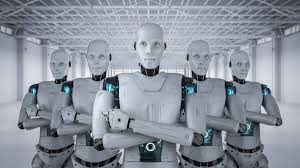Exploring the Dynamics of Modern Recycling Efforts
As the world grapples with increasing waste and the environmental impacts of improper disposal, the role of technology, particularly Artificial Intelligence (AI), in enhancing recycling processes has become a focal point. This article delves into the comparative efficiencies of AI and humans in recycling, highlighting their unique strengths and potential collaborations.
AI in Recycling Operations
AI technology has significantly transformed the recycling industry by automating complex sorting processes that humans find challenging. Advanced AI systems equipped with machine learning algorithms can rapidly identify and sort recyclable materials based on type, color, and even cleanliness. For example, AI-powered sorting machines use sophisticated sensors and high-speed cameras that process up to 2 tons of waste per hour, a feat difficult to achieve manually.
These systems are particularly adept at handling vast quantities of waste with precision. They reduce contamination rates in recycling streams by accurately separating materials, thus improving the quality and resale value of recycled commodities. Studies show that AI-enhanced facilities can reduce sorting costs by up to 40% and increase sorting accuracy to nearly 98%, significantly higher than manual sorting rates, which hover around 70-85%.
Human Flexibility and Decision-Making
Despite AI's impressive capabilities, human involvement remains crucial, especially in areas where flexibility and nuanced decision-making are required. Humans can handle unexpected scenarios such as non-standard items or materials that AI machines may not yet recognize or sort incorrectly. Human workers are also better at managing the diverse conditions in recycling facilities, adapting to changes in waste composition and technology malfunctions more effectively than AI systems.

Education and Advocacy
Humans excel in the educational and advocacy aspects of recycling. They play a critical role in promoting recycling practices, educating the public about sustainable waste management, and influencing policy changes. AI, while powerful in operational tasks, does not engage in community outreach or policy advocacy, which are essential for driving broader changes in recycling behavior.
Collaboration for Optimal Results
The most effective recycling operations combine AI's technological prowess with human insight. In such setups, AI handles the bulk of physical sorting tasks, while humans oversee the operation, manage exceptions, and engage in quality control, ensuring that the sorted materials meet recycling standards. This collaborative approach leverages the speed and accuracy of AI and the adaptability and strategic thinking of humans, leading to more efficient and sustainable recycling systems.
Potential Developments and Innovations
The future promises even greater integration of AI in recycling, with ongoing advancements aimed at improving the technology's ability to detect and process a wider range of materials. As AI systems learn from more diverse data sets, their efficiency and accuracy are expected to surpass current levels, potentially reducing the need for human intervention in routine tasks.
Conclusion: A Symbiotic Relationship
In the comparison of who is better at recycling—AI or human—it becomes apparent that neither can achieve optimal efficiency alone. While AI offers unparalleled capabilities in processing and sorting waste, humans provide the necessary oversight, flexibility, and advocacy to ensure that recycling efforts are not only effective but also sustainable. The future of recycling likely involves a symbiotic relationship between human ingenuity and AI's evolving technologies, harnessing the strengths of both to combat the world's waste management challenges effectively.